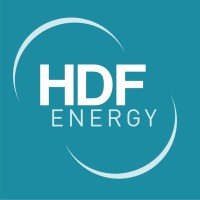Europe sets rules for producing green hydrogen

The European Union issued strict regulations for what qualifies as renewable hydrogen under its clean-energy transition plan, shaping how companies are expected to deploy billions of euros of investments in hydrogen factories in the coming years.
Governments around the world are looking for hydrogen to help replace fossil fuels in industrial processes and electricity generation. Current supplies of hydrogen are largely produced from cracking open molecules of natural gas. The U.S., Europe and other countries are planning to invest hundreds of billions of dollars in factories that use electricity to power machines called electrolyzers, which produce hydrogen by splitting open molecules of water.
The question is how much of that electricity should come from renewable sources for hydrogen to be considered renewable. In Europe, the answer will determine whether hydrogen producers can qualify for financial incentives and whether their product can be used to meet the bloc’s renewable-energy targets. The U.S. Treasury Department is drafting rules that will determine which producers can qualify for billions of dollars in tax credits for green hydrogen under the Inflation Reduction Act.
Producing green or renewable hydrogen requires huge quantities of renewable electricity. The EU aims to produce 10 million metric tons of renewable hydrogen, ammonia and other clean fuels annually by 2030. That will require nearly 14% of the EU’s total electricity in 2030, the bloc says.
The rules issued by the European Commission, the EU’s executive arm, aim to harness demand for renewable hydrogen to spur a new wave of investment in wind and solar farms rather than suck up large chunks of the bloc’s existing renewable capacity. The rules also aim to ensure that renewable hydrogen is to a large extent powered by electrons from renewable projects rather than gas and coal-fired power plants.
“The commission’s had to achieve a very difficult balancing exercise between ensuring that the production of renewable hydrogen doesn’t result in additional fossil fuel generation – which could be considered to be greenwashing” and allowing the market to grow, said Christopher Jones.
To secure the renewable designation, hydrogen factories must sign power-supply contracts with relatively new renewable power projects-no older than three years located in the same or an adjoining region of Europe’s electricity market.
Renewable hydrogen producers will have to show that the total quantity of renewable hydrogen produced and clean electricity consumed is aligned over a period of 30 days, even if the quantities of wind and solar power fluctuate day-to-day with the elements.
Hydrogen producers can also gain the green designation by operating in an area with lots of renewable energy capacity. Green hydrogen factories located in areas of the European grid where more than 90% of the power is renewable can simply buy from the grid without signing contracts with renewable energy projects; that is now true in certain parts of Scandinavia with plentiful hydropower and wind energy.
Factories can also gain the green designation if they show that hydrogen production occurs when power prices are so low that fossil-fuel generators can’t operate profitably. That can occur when strong winds blow in an area with large numbers of wind turbines, driving down power prices close to zero.
The rules don’t allow hydrogen producers to benefit from the renewable label by signing contracts with nuclear power plants, though nuclear reactors produce almost no greenhouse-gas emissions. But the rules also give an indirect benefit to countries with ample nuclear generation: Hydrogen producers in regions with low-carbon power grids can sign contracts with existing wind and solar farms of any age. France, where nuclear generates around 70% of all electricity, lobbied for that provision.
Hydrogen Europe, an industry group, said the strict rules are expected to make renewable hydrogen projects more expensive and limit the industry’s potential expansion. They also aren’t set to apply to other electricity users such as electric vehicles.
“If you’re the only one who needs to prove on an hourly basis where exactly your electricity comes from, that comes along with costs,” said Jorgo Chatzimarkakis.
Mr. Chatzimarkakis said it was nonetheless helpful that the EU is moving forward with new rules because that should provide clarity for companies to complete investment decisions and business models.
Some European hydrogen companies praised the new rules.
Nils Aldag which makes electrolyzers, said the publication of the rules represents a big step toward a predictable regulatory framework for European green hydrogen. “It will help to unlock a pile of investment decisions for electrolysis projects,” he said.
Swedish startup H2 Green Steel, which is seeking to produce steel using green hydrogen instead of coal, said it was pleased the EU rules won’t require additional renewable energy production in regions that already have a high concentration of renewables. The company said hydrogen produced at its plant in northern Sweden, where most electricity is produced from renewable sources, would be classified as fully renewable under the new rules.
